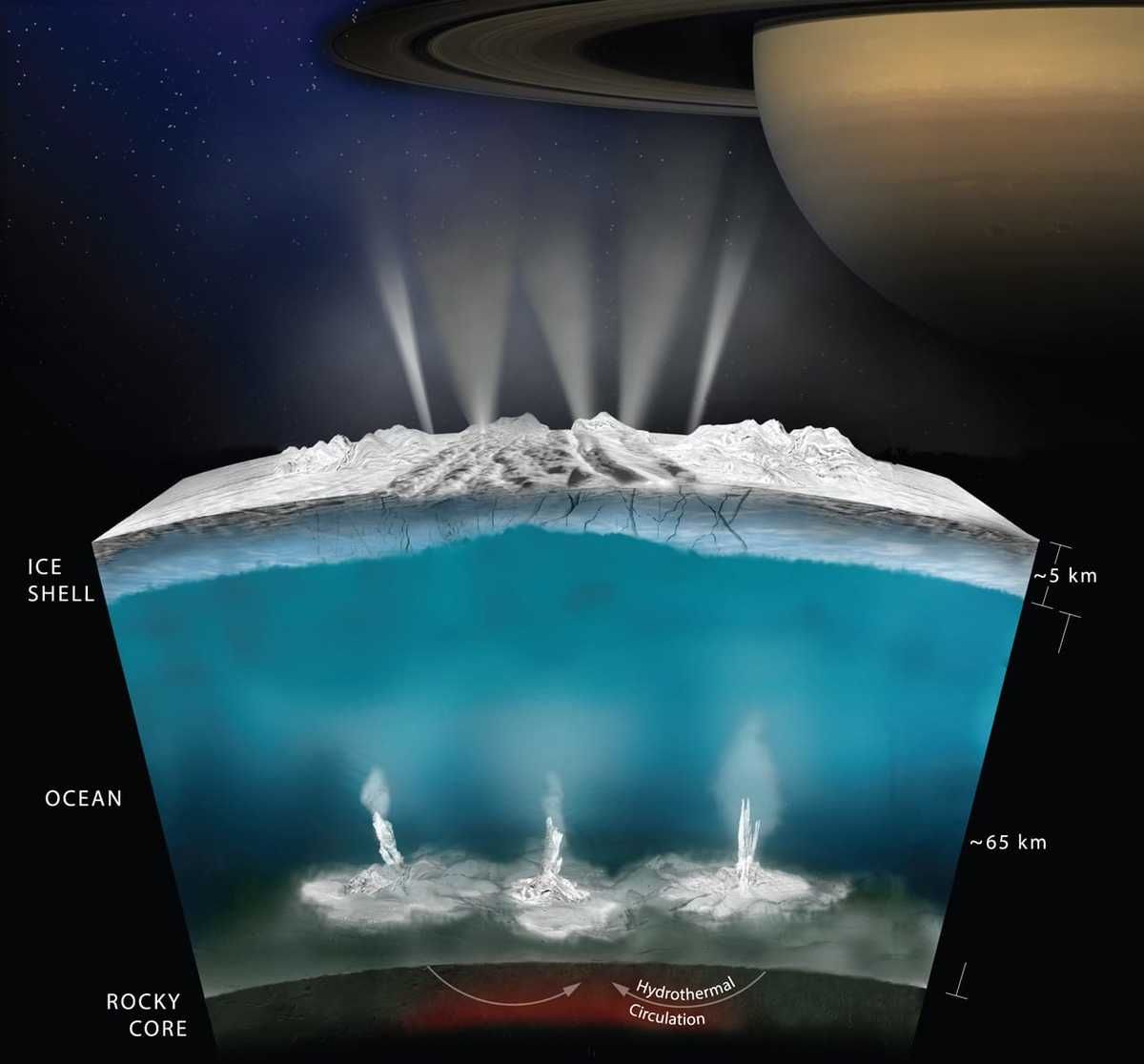Liquid water was originally thought to be relatively rare in the solar system. But one of the most important discoveries of the last several decades of planetary science is that liquid water is extremely common, even outside of the orbit of a star that would allow for it on the surface of a planet or moon. It just happens to be covered by a sheet of ice. Scientists at the Southwest Research Institute (SwRI) have now theorized about what the abundance of liquid water means for life throughout the galaxy, and whether it might be more common than originally thought.
Currently the best theory for the origin of life begins underwater, in geothermal vents that do not require energy directly from the sun. Such an origin story would potentially feasible on ocean worlds covered in a layer of ice, as it does not require any solar power for life to get started, notes S. Alan Stern, a planetary scientist at SwRI.

Artwork by Pam Engebretson, courtesy of UC Santa Cruz.
Additionally, there are some added benefits to Interior Water Ocean Worlds (IWOWs as Dr. Stern calls them) that actually make them more stable places for life to evolve. The ice covering the world, which are normally kilometers thick, would protect any life in the subsurface ocean from potentially catastrophic events such as meteor strikes, solar flares, supernova explosions, or radiation.
Interestingly, Dr. Stern also points out that life primarily developing on IWOWs would post an interesting answer to the Fermi paradox. It would be virtually impossible to detect any alien life in such a world using modern observational astronomy. Luckily, NASA has funded the Ocean Worlds Exploration program so at least in the not too distant future we can explore a few of the IWOWs in our own backyard, such as Europa and Enceladus.
Dr. Stern notes that it is highly unlikely that we will ever find highly intelligent life on these worlds. One primary reason is the lack of ability to build fire in a water logged world, which many scientists believe to be one of the keys to humans developing higher level intelligence.
Even with all the uncertainties surrounding what evolution might look like on such a world, thinking through the implications of one of the most profound discoveries over the last 25 years is certainly not an exercise in futility. Hopefully the launch of Europa Clipper in 2024 will shed some light on these previously underappreciated potential homes to their own branch of the tree of life.
Learn More:
SwRI – SwRI researcher theorizes worlds with underground oceans may be more conducive to life than worlds with surface oceans like Earth
Lunar and Planetary Conference – Some implications for both life and civilizations regarding Interior Water Ocean Worlds
UT – It’s Starting to Look Like Ceres is an Ocean World, Too
Lead Image:
Cross section of an IWOW.
Credit: NASA / JPL – Caltech / SwRI

